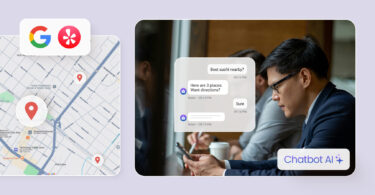Welcome to the experience economy, where a winning customer engagement strategy sets your business apart from your competition.
77% percent of American consumers say that the customer experience is a critical factor in their purchasing decision, even if they have a strong affinity to a brand or product. More so, 33% of Americans say they’ll consider switching companies after just a single instance of poor service.
While customer engagement isn’t entirely the same with customer experience, it is a consequence of the holistic experience a customer has with your business from the moment they research you, to the moment they purchase a good or service, and through….
Businesses that have a solid customer engagement strategy, keep their customers happy: winning their hearts, and their dollars. In this guide, we’ll show you how to maintain and foster ongoing relationships with your customers that extend beyond the point-of-purchase.
Why customer engagement matters
- Up to two-thirds of a company’s profit relies on effective customer engagement.
- Businesses that have a strong omnichannel customer engagement strategy retain an average of 89% of their customers. Companies with weak customer engagement strategies maintain 33%.
- Loyal customers become brand ambassadors for your company. In fact, “word of mouth referrals marketing drives $6 trillion of annual consumer spending and is estimated to account for 13% of consumer sales.”
- Businesses that boosted customer retention rates as little as 5% saw their earnings increase by 25 to 95%.
What is customer engagement?
Customer engagement is the process of interacting with customers through a variety of channels and strengthening your relationship with them. For many businesses, this process begins with the first interaction and extends beyond the point of purchase. Companies can engage with customers via social media, email, websites, community forums, or any other space where they’re communicating or consuming content.
Customers who are more engaged with your brand are more likely to visit you again and promote you to family and friends. 92% of people value recommendations from family and friends above all forms of traditional advertising.
What are the benefits of a customer engagement strategy?
Businesses that develop a customer engagement strategy benefit by:
- Offering customers something of value beyond your products and services.
- Building long-lasting relationships with your customers through timely, relevant, and personalized communications.
- Reducing customer churn. Customers that report great experiences are more likely to upgrade or add services and are less likely to cancel.
- Improving customer loyalty. Loyalty from customers comes from excellent customer service. Customers who receive a personalized experience will return to their favorite brand to buy more in the future than disengaged customers.
- Boosting revenue. When businesses invest in better customer engagement processes and ideas, it is directly reflected in their revenue. Higher customer satisfaction finally results in increased revenue.
- Creating a competitive edge. A well-planned engagement strategy allows you to deliver a consistent customer experience that helps create business differentiation and attract even more customers.
How does customer engagement lead to revenue?
According to research, customer experience is the #1 reason people choose to do business with a company. And it is shown that there is a strong relationship between customer engagement and profitability. In 2016, Constellation Research reported that businesses that improve their customer engagement strategy “increase cross-sell revenue by 22%, up-sell revenue by 38% percent and order size by 5 to 85%.
How to create a winning strategy
Creating a winning customer engagement strategy comes down to using emotion to increase loyalty. Meaningful customer engagement is the best way to stir up the positive emotions that keep customers coming back for more. Here are 6 tips to help engage your customers.
- Create your target customer profile and create a customer journey map. Ask yourself what motivates your customers? What drove them to purchase a product or service from your business? How did they find you?
- Make the first impression count. If you can, offer real-time support and keep the conversation going once you have your customer’s attention. A customer engagement platform that offers chat support is a popular tool many businesses use.
- Leave no stone unturned. Engage your customers across multiple channels like Facebook, email, text. Technology has made it possible to always be connected with your customers. Take advantage of it! Solutions like Birdeye Messaging can be used to collect all your customer communications in one convenient location.
- Identify points of interaction by observing customer behavior in real-time. Analytics help you understand your customers and help you meet their needs.
- Personalize your services. Generic marketing no longer works. Customers want to feel like you’re talking to them in person.
- Take feedback – Feedback is a gift that helps you understand what drives value for your customers. Use surveys to help understand your customers’ expectations and address any problems they have. Share the results with the participants and follow up again after implementing any changes. This will make your customers feel heard and valued.
Why Birdeye
Customer engagement platforms centralize all customer communications, track customer behavior, help service teams efficiently respond to inquiries, and help teams personalize campaigns by analyzing customer data and tracking industry patterns.
Ready to get started? Sign up for a demo today.
Originally published






![[Feature image] The best AI tools for business in 2025 A complete guide for productivity, content, and growth](https://birdeye.com/blog/wp-content/uploads/Feature-image-The-best-AI-tools-for-business-in-2025-A-complete-guide-for-productivity-content-and-growth-375x195.jpg)


